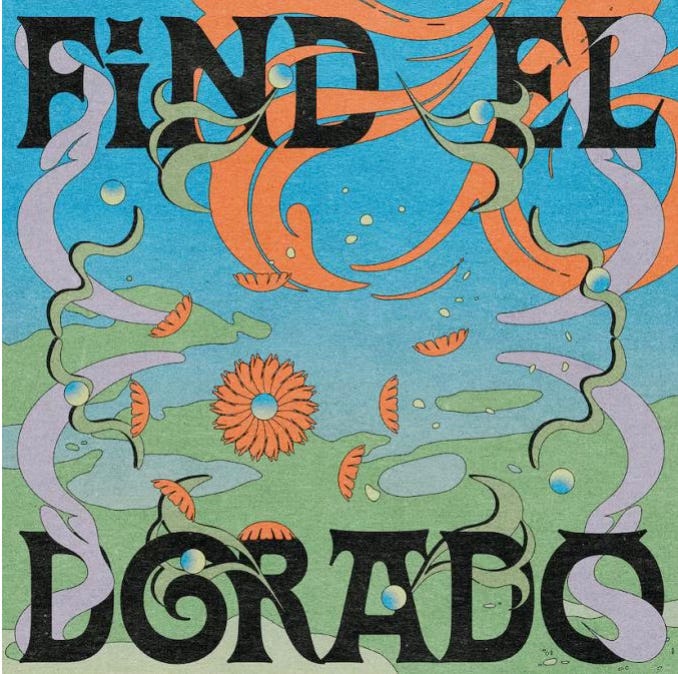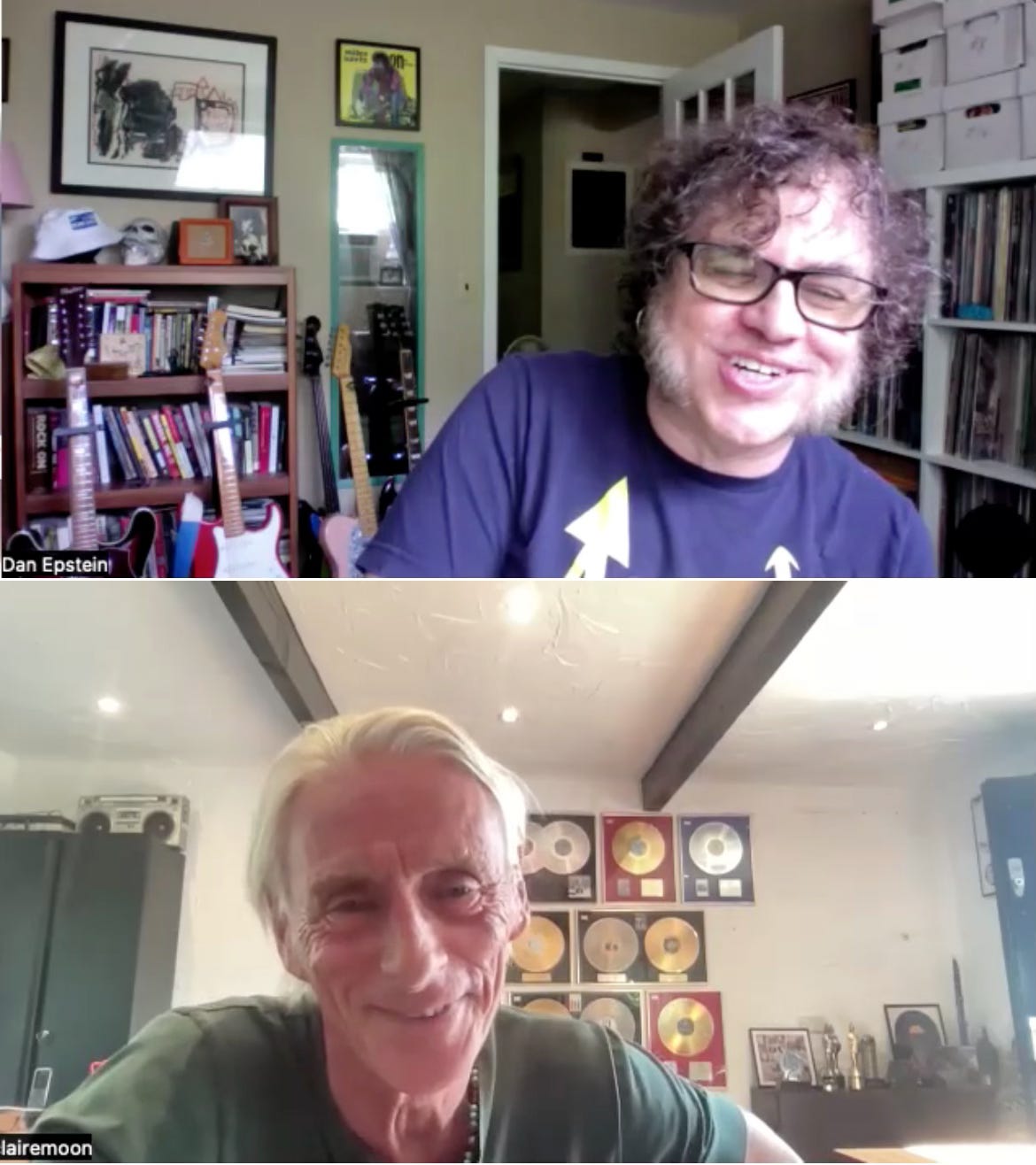Paul Weller: "There's Always Something Else to Learn in Life, Isn't There?"
Chatting with "The Modfather" about his new covers album, Find El Dorado
If you’re a longtime reader of this Substack and/or a longtime friend of mine, you already know that The Jam were one of my favorite bands in high school, and that their six studio albums are still in semi-regular rotation in my abode to this day. Those albums have also permanently taken up residence in part of my brain, as the following Jagged Time Lapse treatise from 2023 makes quite clear:
My relationship to the rest of Paul Weller’s discography is, however, somewhat more complicated. Despite some undeniably cringeworthy tracks, I genuinely liked much of The Style Council’s ‘83-’85 output when it was first released, and could easily compile a playlist of 20 or so Style Council tracks that I still find quite delightful. But while many of my fellow Jam lovers breathed a sigh of relief in the 1990s when Weller went solo and picked up an electric guitar again, I have — despite repeated attempts to find a “way in” — found his solo discography to be largely impenetrable. Not that the music is bad, by any means; but for whatever reason I’ve never met a Weller solo LP that’s moved me enough to want to take it for repeated spins.
Until now, that is. And weirdly enough, it’s a covers record that did the trick — the new Find El Dorado, which features Weller’s soulful renditions of 15 songs by other artists, most of them fairly obscure. Maybe it’s because at least half the songs on this album are completely new to me, or maybe it’s because the record’s moody, melancholic vibe (largely courtesy of Weller’s longtime guitarist and collaborator Steve Cradock, who produced the record) really resonates with me, but I haven’t been able to get enough of Find El Dorado. Weller sounds in great voice throughout the album, and he really seems to enjoy sinking his teeth into the material, which ranges from better-known tracks like The Bee Gees’ “I Started a Joke” and Merle Haggard’s “White Line Fever” to choice obscurities like The Guerillas’ “Lawdy Rolla” and Willie Griffin’s “Where There’s Smoke, There’s Fire”.
The release of Find El Dorado also provided the opportunity for my first-ever Paul Weller interview. While my inner 16 year-old was doing somersaults over the prospect of speaking with “The Modfather,” my adult self was trying not to get my hopes up in advance of the encounter, given his well-earned reputation for being cranky and dismissive in interview situations. But our chat was a delightful one; not only did Weller seem to be in a remarkably sunny mood — see photographic proof below! —but we also connected pretty quickly over our mutual record-collector geekdom.
A portion of our conversation formed the basis of a feature I did for FLOOD magazine last month, but space considerations prevented me from using the whole thing, which I’m now sharing here with my paid subscribers.
If you’d like to enjoy the entire interview (as well as my many other musician interviews and memoir-in-progress chapters in the JTL archive — and all the episodes of the CROSSED CHANNELS podcast I do with my pal
, the debut episode of which also concerns The Jam), just click the button below and opt for a paid subscription, which will set you back a mere five bucks a month or $50 a year. An edifying and entertaining time is guaranteed for all!And now, on to our interview…
How did Find El Dorado come about?
It’s something I’ve been storing up in the back of my mind for a few years. There were certain songs that just kept coming back to me as, “They’d be great together,” or “That would sound really nice,” or “I could imagine singing that.” So it’s been in my mind for some time, but then I just kept hearing more and more songs. There’s stuff [on this album] that I’ve only heard in the last year or two, which I just thought were amazing — songs like “Pinball” by Brian Protheroe, which was a hit back in 1974 but I don’t remember from the time, and “Journey” by Duncan Browne, “Lawdy Rolla”…there’s at least six or seven that I’ve only heard in recent times. But the more I listened to these songs, the more I could hear a thread — not a concept of any kind, but some sort of musical thread. I felt like they connected in my mind, anyway.
I took this year off touring because we’ve done shitloads in the last couple years — all great, but it felt like a good time to stop for a bit. So I wasn’t touring, and I didn’t really want to write anything or make a record of my own songs, but I still wanted to make music. So I thought, “Well, this is a good time to do the covers record.” So I've been thinking about it for a long time, but I kept writing more and more songs and kept making more records. So this year is my fallow year — so, yeah, it's a good time to do it. It was good timing, yeah.
So doing this gave you a chance to recharge your batteries, in a way?
Yeah — just to reassess things, come back looking at things in just a little bit of a different angle, you know? And even with the record, right? I didn't produce it this time. And Steve Cradock, who’s in my band — and Ocean Color Scene, obviously — he produced the record. And so I really only just sang on it.
So it was nice to just to have a hands-off thing, even though in the studio fI would sometimes be thinking, “Oh, I don't know, maybe we could do this?” And I just, you know, had to remind myself, “Look, he’s producing it. Let him get on with it.” And that was nice. It was a good discipline. And, you know, like anything, if you're open to it, there’s always something else to learn in life, isn’t there? So, you know, I enjoyed it. I enjoyed the whole process. It was, it was easy to do, and it was fun to do, and it was nice. Just a nice experience.





